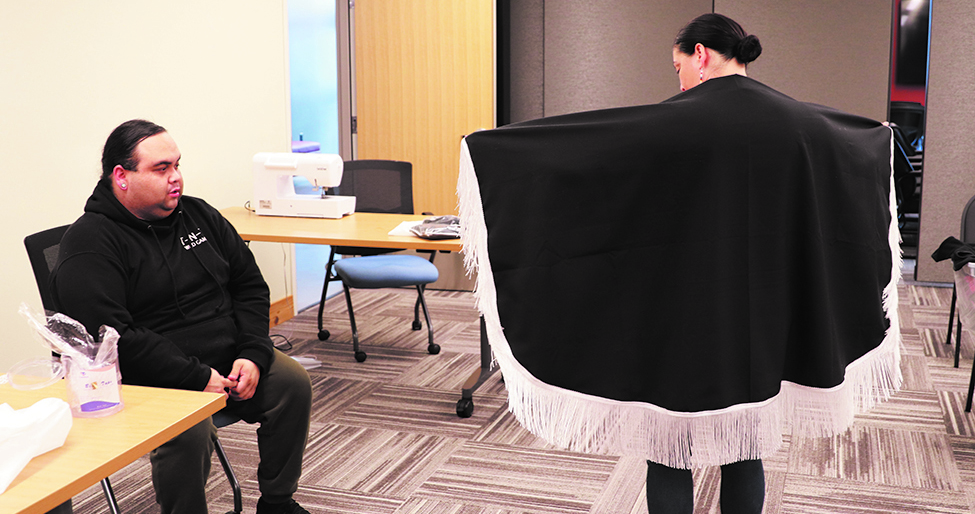
By Kalvin Valdillez, Tulalip News
Aside from the important spiritual work that is conducted at the Tulalip tribe’s annual Salmon Ceremony, one of the most captivating and spectacular aspects of the event is viewing all the regalia. Donning cedar hats and headbands, ribbon skirts and beautiful Indigenous accessories such as cedar-woven cuffs and beaded earrings, tribal members showcase their traditional gear at the ceremony, in which the local fishermen are blessed for a safe and plentiful season and yubəč, the first king salmon to arrive at local waters, is honored in a good way, as a means to pay respect to the entire species for providing nourishment for the people of Tulalip.
Much more than a fashion statement, the regalia serves an important role in the Salmon Ceremony. Shawls, which display family crests and colors, are visible as the dancers enter the longhouse. As the singers bellow songs and chants in traditional Lushootseed, the dancers depict the stories within the songs to onlookers.
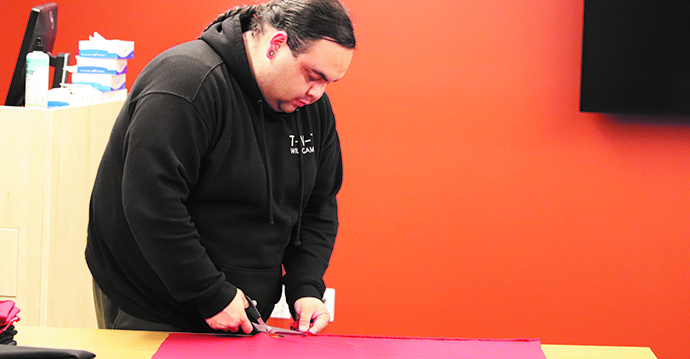
During a number of songs, including the Eagle/Owl Song (Tribute to Kai Kai), the Happy Song and the New Beginning Cleansing Song (Glen Gobin’s Song), the dancers utilize their shawls to perform the traditional work. Spreading their arms out wide as if soaring through the air, while turning in complete and semi-circles, the fringe of their shawls swooshes in the air to the drumbeats as the dancers work their way around the longhouse. During the ceremony, the boys and men wear vests. Similar to the shawls, the vests also showcase family emblems and often times, miniature cedar-carved paddles are arranged in multiple rows and dangle from the vests.
Creating your own regalia is an important experience for tribal members, whether it’s your first time participating at Salmon Ceremony or if you are returning to the tradition from a personal hiatus. Deciding the color and designs that your regalia will display helps create a strong connection to the official attire of the ancestors, and from that point on, a sense of pride is created each time you wear your regalia.
Traditionally, regalia was made exclusively from materials found locally in the natural world, namely cedar and the fur from the now extinct wooly dogs. A lot of time, attention and detail goes into crafting regalia and because of the effort put into making the shawls, headbands and vests, the regalia holds a special place in the hearts of each drummer, singer and dancer.
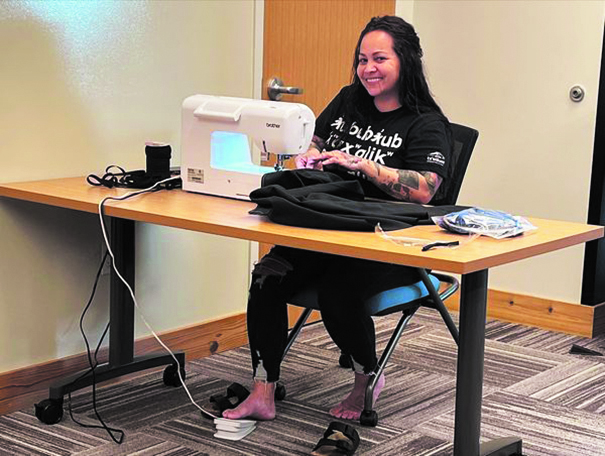
Although most tribal members craft their regalia within their families, there are numerous first timers this year, and like big chief yubəč, several returnees. Many of these Salmon Ceremony participants do not own any regalia whatsoever, and for this reason the Tulalip Tribes Events Manager, Malory Simpson, decided to host a weekly crafting circle.
Held every Tuesday at various locations throughout the reservation, but mainly at the Tulalip Gathering Hall, the crafting night allows Salmon Ceremony participants the opportunity to learn how to make their own shawls and vests. Malory explained that the budget, specifically for regalia, was quite a small amount, considering all the materials that needed to be purchased in order to make the regalia. She reached out to her community and recruited a small group of people to help raise funds to purchase fabric and all the tools needed to create shawls and vests for those in need of regalia.
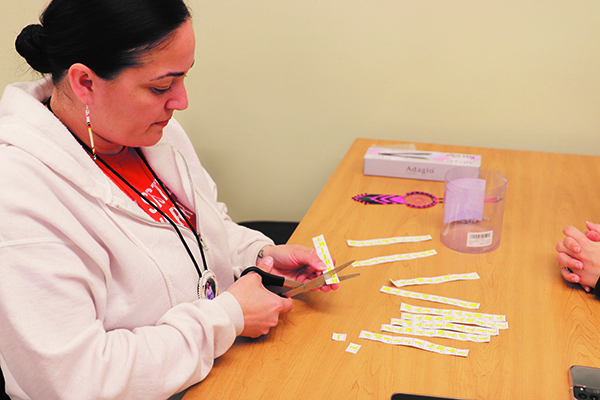
“We decided to do a fundraiser because it frees-up money to be spent more freely on other items we may need such as shells, smaller paddles, or maybe a vest or velour dress for different options of regalia,” Malory explained. “I was approached by a few different people about when we would be hosting a culture night or regalia making night. It was my understanding that the Events Manager never really coordinated that, but I felt the need to reach out to those who I knew were savvy in sewing and creating regalia. I have never done something like that before, so I knew I needed help. After a Salmon Ceremony practice, it was brought up by Glen Gobin that we needed to get a craft night going. Tuesday seemed to work for the majority, so we went with that day. We have ten shawls made as of now and I think twenty more to go.”
With only a few weeks before Salmon Ceremony, it is important for dancers and singers to have their regalia ready to go for the special day of honoring. Tribal leaders are inviting the entire community to come out to the remaining practices, held at 5 p.m. every Thursday at the Tulalip Gathering Hall, to learn about the revival of the ceremony and its importance to the tribe, as well as to immerse in the culture and learn the meaning behind the traditional songs and dances that are offered at the Salmon Ceremony. The last practice on June 9th will be held at the Tulalip Longhouse, where the Salmon Ceremony will also be hosted two days later on June 11th starting at 10:30 a.m.
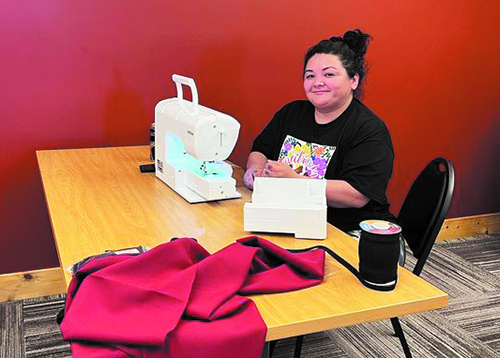
In a Facebook post following the first regalia crafting circle, tribal member Lena Hammons shared, “Awesome night of making shawls for Salmon Ceremony. I got two done and had to learn [how to operate] this sewing machine. Awesome dinner and great company! Much needed community time after two years of isolating.”
If you are interested in crafting regalia for this year’s Salmon Ceremony, please contact Malory at (360) 716-4399 for more information.